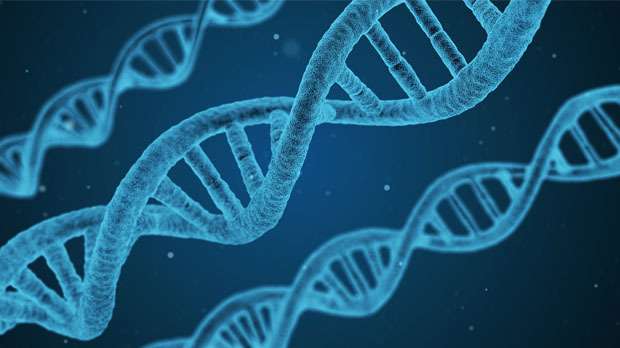Nine burning questions about CRISPR genome editing answered

In recent years, science and the media have been buzzing with the term CRISPR. From speculation around reviving the woolly mammoth to promises of distant cures for cancer, the unproven potential for this genome editing tool has been stretched far and wide.
It's therefore no surprise that CRISPR has piqued the interest of many – scientists and the public alike. So in this post we'll be exploring this innovation by answering some of the most common questions that pop up.
1. What is CRISPR?
CRISPR, or more precisely CRISPR-Cas9, is a molecular toolkit that scientists have developed to make precise edits to DNA – our code of life. It was actually borrowed from bacteria, where in its original form it was used to protect microbes from attack by viruses.
2. How does it work?
The system is made up of 2 parts. The first is a strand of RNA – DNA's chemical cousin – which matches up with a region of DNA inside a cell that a scientist may want to target. This then acts as a shepherd to guide the second component – a pair of 'molecular scissors' called Cas9 – to the site of action, where it makes a snip across the DNA.
3. What can it do?
Once scientists have chopped their target region of DNA, a number of possibilities are opened up: they could disrupt the function of a particular gene, cut it out, make precise spelling changes to the DNA sequence, or slip in an entirely new gene. It's an extremely precise method of genetic modification.
4. Is it worth the hype?
CRISPR allows scientists to edit DNA in a way that's quicker, cheaper and more accurate than ever before. So it's an exciting development that's opening up new possibilities for scientists across the globe working in a number of different fields. But looking beyond the lab it's still very early days. Ideas for how the technology might be adapted to treat diseases are only just beginning to be considered. So it's important to be wary of premature promises made in the media when there is a lot of research to be done, and risks to be measured.
5. What are the concerns over safety as the tech develops?
Although CRISPR is hailed for its precision, concerns lie with what might happen if it misses its target, which it can. DNA is complex and many genes are intricately linked, so it could well be that modifying one gene has the scientists' desired outcome, but also inadvertently affects the function of other genes and molecules.
DNA is also written using an alphabet of just 4 chemical letters, meaning stretches of DNA that look very similar might both be targeted by CRISPR, which again may cause unintended effects. So scientists need to thoroughly scrutinise the consequences of their edits in these early lab development stages to ensure that they're not accidentally disrupting something important, which might not immediately be apparent.
6. How is it used in cancer research?
Cancer is caused by faulty genes, so recreating these in the lab with CRISPR allows researchers to explore the underlying biology of the disease and understand more about how it develops. That's what our scientists are doing for a type of brain tumour called glioblastoma.
Tweaking genes in cancer cells could also help identify those that are essential for the cells' survival, and therefore could be targeted with new treatments. On top of that, scientists could use the technique to explore ways that cancer cells become resistant to drugs, potentially opening up new ways to stop this from happening.
7. Could it help cure cancers?
Cancer isn't a single disease – in fact, it's a group of more than 200 unique diseases – so it's unlikely that any single treatment could act as a one-size-fits-all panacea. That includes CRISPR. And while there's no evidence yet that CRISPR can be used to treat cancer, it's possible that as the technology develops it could be used in treatments in some way. The most promising idea so far is to use it in cell therapy, where patients' own immune cells would be taken out and tweaked, giving them a 'power-up' so that they can better attack the cancer when given back to the patient. But this idea still needs testing in clinical trials.
8. What can't it do (yet)?
With the advent of gene editing came the idea that this technique could potentially be used to correct faulty, disease-causing genes in people, therefore curing their illness. This remains a long way off, and would be an incredibly complex area to study, but it's not impossible. Much more research is needed first and where the desired edits might involve correcting inherited faulty genes, there are huge ethical questions to address, particularly around editing human embryos. These kinds of public debates, discussions and expert recommendations are already underway.
9. So, where are we now?
In the context of cancer, CRISPR is beginning to move from lab bench to bedside. Last year scientists in China began trialling CRISPR-edited immune cells in lung cancer patients, where they'd snipped out a gene that produces a stop signal, called PD-1, for the immune system. They plan to test if this edit will boost the cells' cancer-killing abilities, but we won't know the results for a while.
A team in the US is also nipping at their heels, launching a similar trial this year but for several different cancers.
These could mark the beginnings of a new wave of cancer treatment. And those clinical trials will hopefully provide some early answers.
Whether or not CRISPR will ultimately match its promise is unknown. But it's an exciting time for science.
Of that there is no doubt.
Provided by Cancer Research UK


















